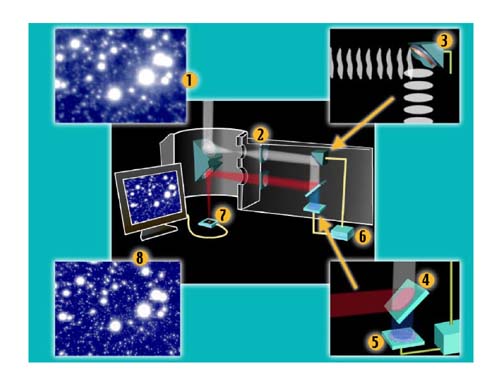Surpassing Hubble from the Ground
Several friends have asked me recently what I thought of the eventual, and possibly imminent, decommissioning of the Hubble Space telescope, arguably one of the preeminent scientific instruments of the last century. My reply describing wondrous past utility now becoming obsolete was almost always met with stark surprise. Wasn't Phillip supposed to be the champion of all things space and astronautics?
Well, for all you space telescope traditionalists, witness the future today. Last week, there was a release from the Gemini Observatory in Hilo, HI that included images even the Hubble telescope couldn't have taken, and they were taken from the ground, through the earth's atmosphere.
Well, for all you space telescope traditionalists, witness the future today. Last week, there was a release from the Gemini Observatory in Hilo, HI that included images even the Hubble telescope couldn't have taken, and they were taken from the ground, through the earth's atmosphere.

The Gemini observatory images combined optical and infrared wavelength images of the Pillars of Creation area of the Orion nebula. The really interesting new data refutes one of the earlier theories that hot energetic starts were blowing dust and matter off of several proto-stellar objects to form the dusty pillars. Gemini's latest data shows that there was a violent explosion from below the lower left corner of the image that ejected several large objects (shown in blue from the hot and energetic iron gas emissions) that are leaving wakes of energized hydrogen gas shown in orange.

The innovation that made this type of image quality possible from the ground, even through the distortion due to the Earth's turbulent atmosphere is called adaptive optics. An actuated deformable mirror is manipulated to introduce the inverse distortion from an image of a very tiny or point source of bright light which has passed through the atmosphere. Here is a diagram of the system used by Gemini.

From the Gemini site: A schematic of how an adaptive optics systems, like Altair on Gemini North, works to correct distorted starlight. The illustration (1) is an example of a blurry image taken without the help of adaptive optics. When starlight is collected and focused by the telescope, just prior to coming to a focus, the light entering an adaptive optics system is first collimated (2) and is reflected off a deformable mirror (3). After reflecting off the deformable mirror, the light passes through a beam-splitter (4) where the shorter wavelength light (optical) enters the wavefront sensor (5) which takes a "snapshot" of the distortions on the wavefront and sends the information via a computer (6) to the deformable mirror to keep the wavefronts corrected and flat. Finally, the light is focused (7) and imaged on a detector (8) for astronomers to study.
When there is no bright star in the field of view, the Gemini system uses a laser that targets the ionosphere to create an artificial star. Here is an image of the system in operation.

I can't wait to see what else this system comes up with.
Do check out their web site for all the details: Gemini observatory.
Do check out their web site for all the details: Gemini observatory.























No comments:
Post a Comment